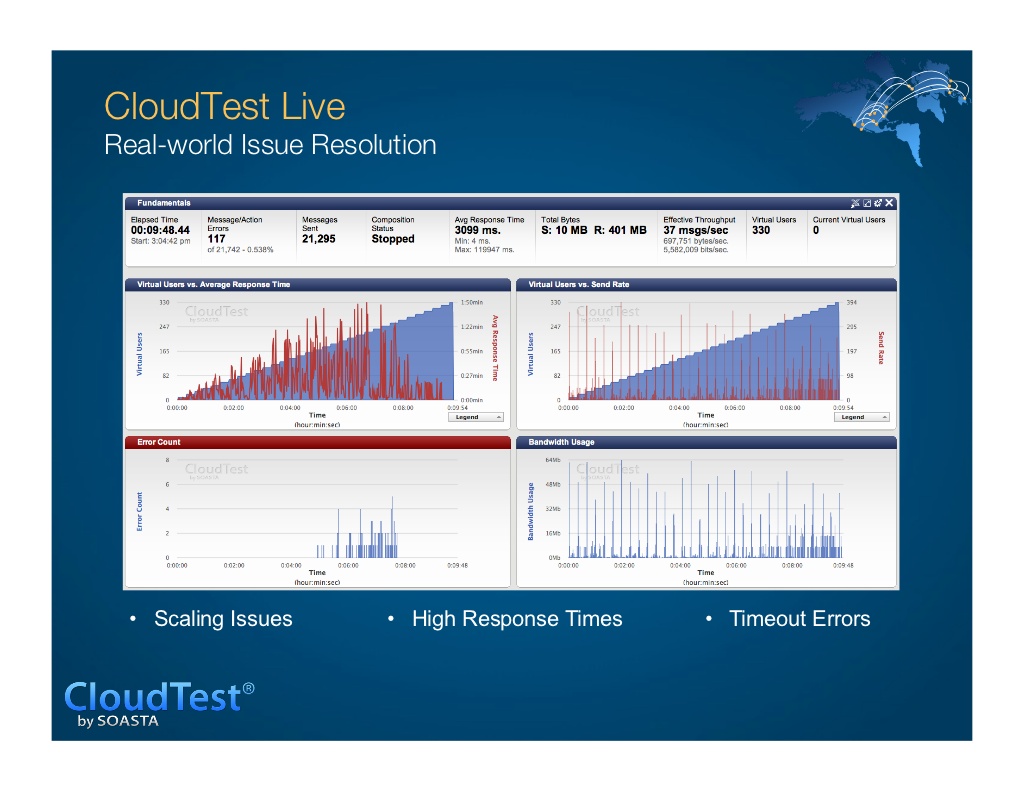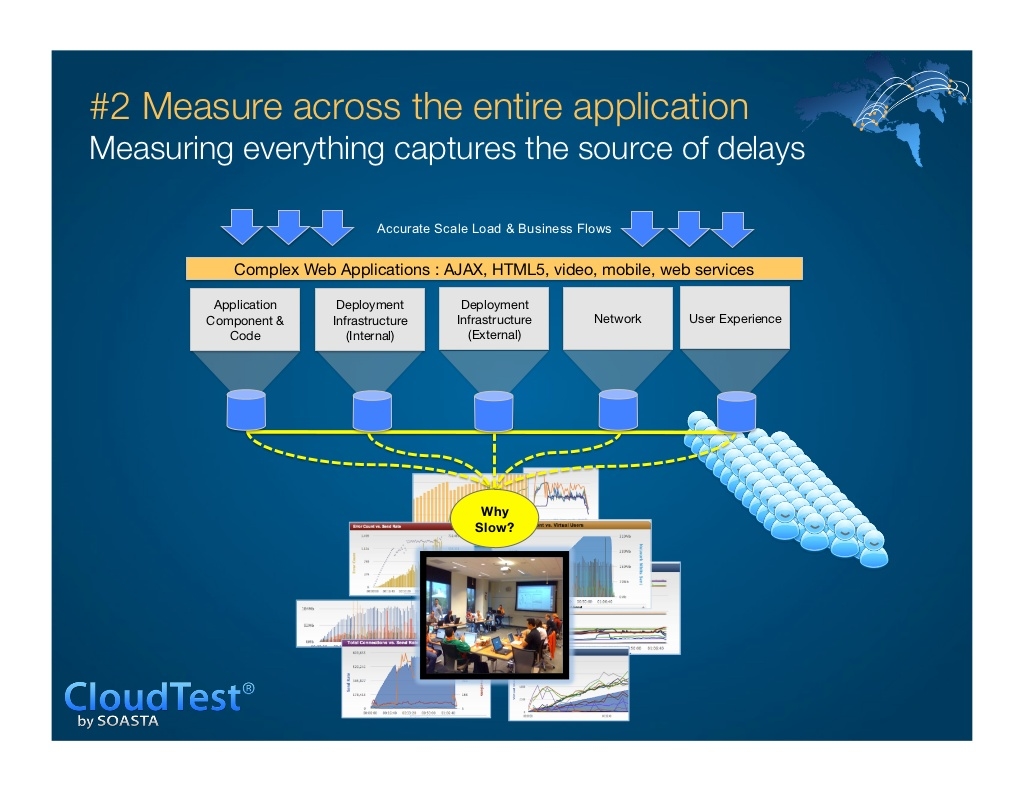Cloud Tools: Testing with CloudTest

 Today, we’d like to make a short overview of CloudTest—a tool that provides load testing as a service for web and mobile applications—and the use of this product in a typical business environment.
Today, we’d like to make a short overview of CloudTest—a tool that provides load testing as a service for web and mobile applications—and the use of this product in a typical business environment.
CloudTest is a solution that enables engineers to implement predefined on-demand testing scenarios or design customized test cases using JavaScript to check load, performance, functionality, and GUI efficiency.
CloudTest pros and cons
Pros
CloudTest can be used to test applications hosted both in-house (behind a Firewall) and in the cloud (such as Amazon EC2, Xen, etc.). The results of the testing may be searched by messages, by errors, or by values, simplifying the performed analysis.
CloudTest features an Ajax-based user interface and an analytic memory service that handles large results sets and synchronizes data from distributed tests, as well as browser-independence and support for common web-based standards, including SOAP, REST, HTTP(S), HTML, JSON, etc.
Cons
However, companies may encounter a number of challenges when choosing products and services for testing their applications in the cloud. This includes such issues as load balancing, auto scaling, failover, and resource tuning.
Recommended use
CloudTest is designed to perform extremely massive web-scale tests, identifying and coping with performance issues through deployment and into production. The solution may also be of interest to those who need a controlled environment for real-world scenario simulations and execution of tests in-house, most commonly against development and QA environments.
Want more? See the slides!
Further reading
- Cloud Tools: Ruby-Based Cloud Monitoring with Scout
- Cloud Tools: Jungle Disk Backup and Recovery
- Cloud Tools: Olark Web Chat









